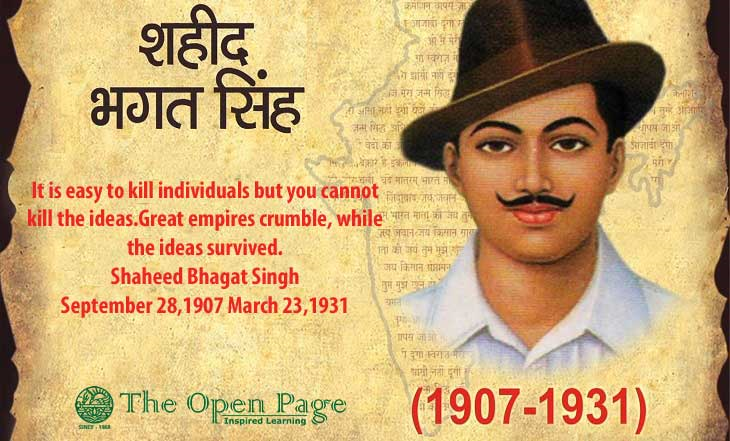Posted by
The Open Page |
28th September 2017

Bhagat Singh: A Perennial Saga of Inspiration
Bhagat Singh was born to Vidyavati and Kishan Singh on September 28, 1907, in the village Banga in Lyallpur district, now we can see this location in Pakistan. His original village was Khatkar Kalan in Jalandhar district. He hailed from a patriotic family. Bhagat Singh naturally imbibed patriotic sentiments.
The life and work of Bhagat Singh shows the glorious struggle against British Imperialism assumed legendary proportions. He has been a perennial saga of inspiration to all those who cherish sovereignty, secularism and socialism-ideals for all who have participated to make India free.
One incident which also hammered Bhagat singh when he was then just 12 years old and was studying at the DAV School in Lahore. He was deeply enraged by the Jallianwala Bagh massacre. It has been recorded that he immediately went to the Bagh and collected its soil in a bottle and kept it as a constant reminder of the hurt and humiliation that the India people had suffered.
When the Non-Cooperation Movement started on 1920, Bhagat singh left the DAV school and joined the National college. His college friends included Bhagwati charan Vohra, Suhdev and Yashpal. He evinced great interest both in his studies and in politics and was a voracious reader. His area of special interest was the history of revolutions.
He advocated armed Uprising against British rule.
His greatest achievement was to inspire huge number of youths to the cause of Freedom.
March 23, 1931 is the death day, when India lost Bhagat singh. Some motivating words from from his mouth which has boosted the followers.
“They may kill me, but they cannot kill my ideas. They can crush my body, but they will not be able to crush my spirit.”
It is easy to kill individual but you cannot kill the ideas.
“Love always elevates the character of man. It never lowers him, provided love be love”
If the deaf are to hear the sound has to very loud.
His area of special interest was the history of revolutions.
Read Full Post »